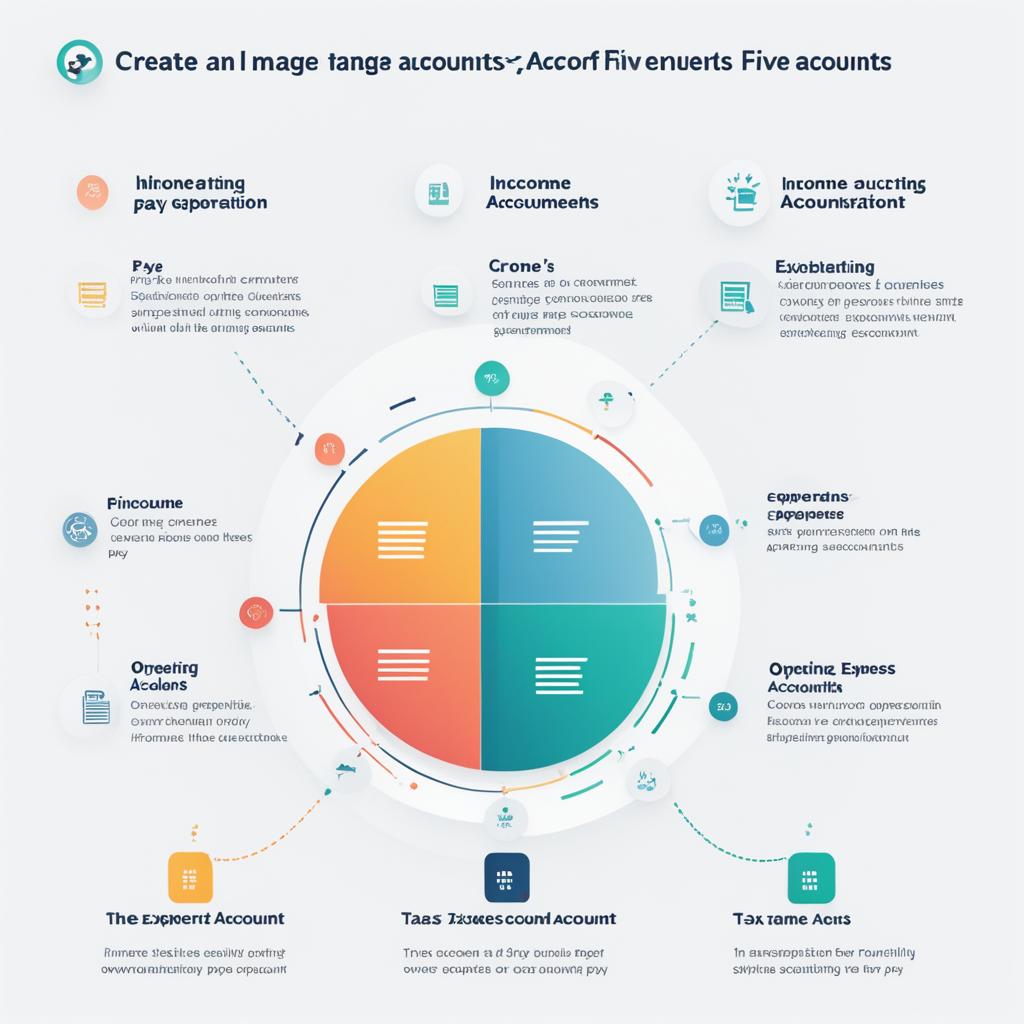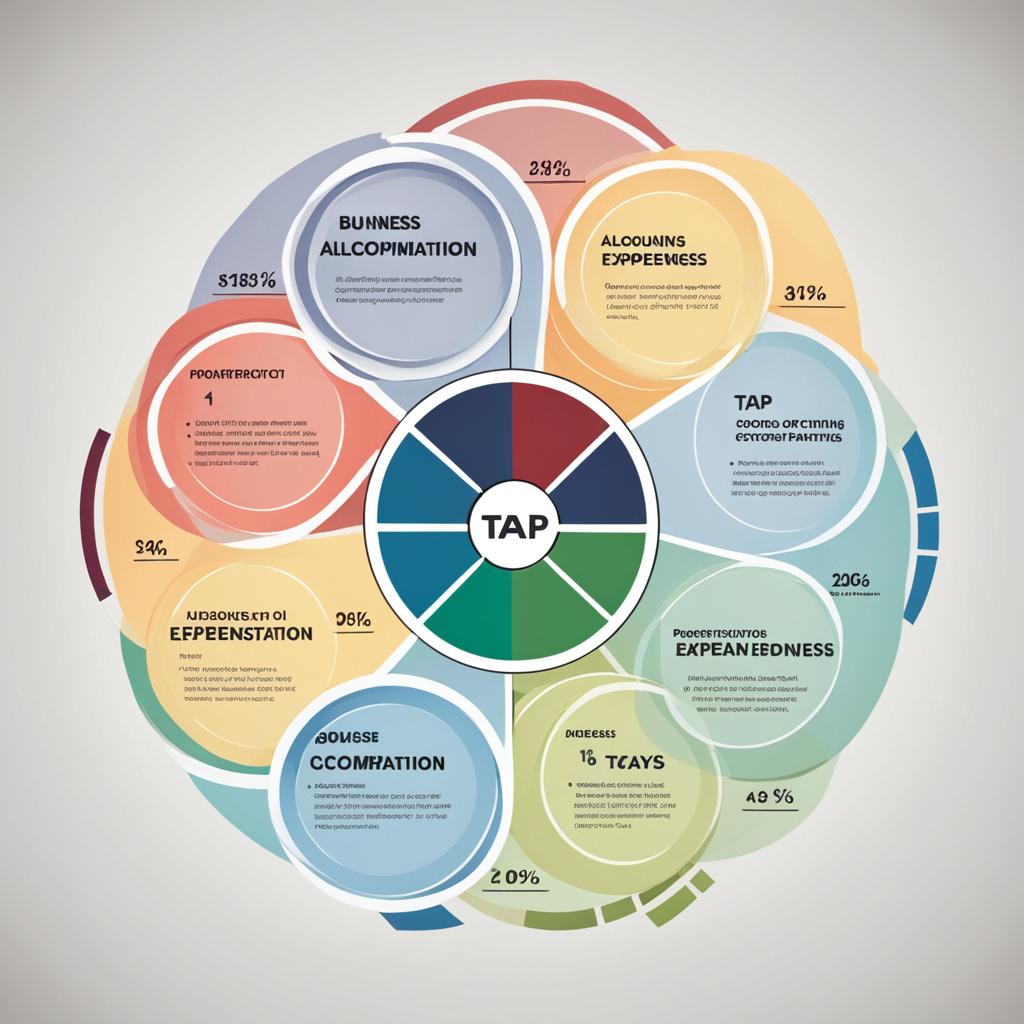Greetings! Today, I want to delve into a financial management approach that has been gaining significant attention in the business world. It’s called the Profit First Method, and it promises to help you keep your business sustainable and profitable. Are you intrigued? I certainly was when I first discovered this revolutionary technique.
The Profit First Method is not just another budgeting strategy. It’s a complete system designed to transform the way you manage your business finances. By shifting your mindset and prioritizing profit, this method can have a profound impact on your financial success.
At its core, the Profit First Method involves taking a fixed percentage of each sale as profit before allocating funds for other expenses. This simple yet powerful concept helps business owners avoid the common mistake of putting profit last. Instead, it provides a framework that encourages smarter spending decisions and ultimately boosts profitability.
But does it really work? Can the Profit First Method deliver on its promises? In this article, we’ll explore the ins and outs of this system, discussing its implementation, benefits, challenges, and its overall impact on business growth. So, let’s dive in and see if the Profit First Method is the key to financial success for your business.
Key Takeaways:
- The Profit First Method is a financial management system that prioritizes profit.
- It involves allocating a percentage of each sale as profit before considering other expenses.
- By focusing on profit first, businesses can make more strategic financial decisions and increase profitability.
- Implementing the Profit First Method requires setting up separate bank accounts and determining target allocation percentages.
- While the Profit First Method may not work for every business, it offers several benefits, including improved cash flow management and increased financial stability.
What is the Profit First Method and Why Should You Use It?
The Profit First Method, introduced in the book “Profit First” by Mike Michalowicz, is a revolutionary financial management system that prioritizes profit allocation in business. This method involves allocating a percentage of each sale as profit, ensuring that profit is at the forefront of all financial decisions. By implementing the Profit First Method, businesses can optimize revenue and increase their overall profitability.
Traditionally, businesses follow the formula of “Sales – Expenses = Profit.” However, the Profit First Method proposes a different approach by rearranging the equation to “Sales – Profit = Expenses.” This simple but powerful shift in perspective forces business owners to prioritize profit allocation instead of treating it as an afterthought.
Applying the Profit First Method helps business owners develop a more efficient and sustainable financial management system. By reserving profit upfront, businesses are compelled to make smarter spending decisions, analyze expenses more critically, and identify opportunities for revenue optimization. This strategic approach enhances cash flow management and drives long-term financial success.
“The Profit First Method transforms how businesses view and manage their finances. By prioritizing profit allocation, business owners gain clarity on their financial performance, make informed decisions, and ultimately drive profitability.” – Mike Michalowicz
Implementing the Profit First Method provides business owners with a clear framework for financial success. It encourages discipline, accountability, and a shift toward a profit-focused mindset. By taking profit first and incorporating the Profit First Method into the business’s financial DNA, businesses can create a sustainable path to growth and prosperity.
How the Profit First Method Works
The Profit First Method involves the following key steps:
- Setting up separate bank accounts: Business owners should establish different accounts for income, profit, operating expenses, owner’s pay, and taxes. This segregation ensures that funds are allocated according to the Profit First formula.
- Determining target allocation percentages: Each account should have a target allocation percentage based on the business’s unique needs and goals. These percentages determine how much of each sales dollar is allocated to profit, expenses, owner’s pay, and taxes.
- Transferring funds to designated accounts: Regular transfers between the accounts, following a specific rhythm, create a structured approach to cash flow management. Business owners should determine a transfer schedule that works best for their financial situation.
By following these steps and adopting the Profit First Method, businesses can optimize revenue and achieve long-term financial sustainability.
| Benefits of the Profit First Method |
|---|
| Improves cash flow management |
| Enhances profitability |
| Prioritizes profit as a business goal |
| Encourages smarter spending decisions |
| Identifies opportunities for revenue optimization |
| Creates long-term financial sustainability |
How to Implement the Profit First Method in Your Business
Implementing the Profit First Method in your small business is a strategic way to manage your finances and optimize cash flow. By following a few key steps, you can effectively allocate funds and prioritize profit, ensuring the financial sustainability of your business.
First, it’s important to set up separate bank accounts for specific purposes. These accounts include income, profit, operating expenses, owner’s pay, and taxes. By segregating funds into different accounts, you can ensure that each allocation is done according to the Profit First formula. This practice creates a clear structure for your finances and prevents the commingling of funds.
Once the accounts are established, business owners need to determine the target allocation percentages (TAPS) for each account based on their unique financial situation. These percentages will vary depending on the nature of your business, industry, and revenue levels. By customizing the allocation percentages, you can ensure that your business’s financial goals align with the Profit First Method.
To effectively manage cash flow, it’s essential to make regular transfers between the different accounts. Following a specific rhythm, such as the 10/25 Rule, can help you establish consistency in allocating funds. This rhythm ensures that profit is prioritized and allows you to cover operating expenses, pay yourself as the owner, and set aside funds for taxes.
Table: Rhythm for Transferring Funds
| Account | Frequency | Allocation Percentage |
| ————————— | ——————— | ——————— |
| Income | Upon each sale | – |
| Profit | Twice a month | 5-15% |
| Operating Expenses | Twice a month | 60-80% |
| Owner’s Pay | Twice a month | 20-30% |
| Taxes | Once a quarter | 15-20% |
By adhering to this rhythmic approach, you can effectively manage your cash flow and ensure that profit remains a priority in your business finances. It promotes financial discipline and helps you make informed decisions in line with your profit goals.
Quote:
“Implementing the Profit First Method allows businesses to establish a clear financial structure and prioritize profit. By allocating funds according to the Profit First formula, businesses can better manage their expenses and optimize cash flow.”
The Five Profit First Accounts and Their Functions
The Profit First Method utilizes five core accounts to effectively manage a business’s finances and prioritize profit. Each of these accounts serves a specific function in the financial management system, ensuring a structured approach to achieving financial stability and growth.
Let’s take a closer look at the five profit first accounts and their respective functions:
1. Income/Revenue Account
This account serves as the central hub for all revenue generated by the business. It acts as the collection point for incoming funds from sales, services, or any other sources of income.
2. Profit Account
The profit account is a crucial component of the Profit First Method. It accumulates a predetermined percentage of the revenue as profit and serves as a distribution point for allocated profit. The profit account represents the reward for the business owner’s hard work and serves as a tangible measure of the business’s financial success.
3. Operating Expenses Account
The operating expenses account is responsible for covering all the essential expenses involved in operating the business. These expenses can include rent, salaries, utilities, marketing, and any other costs necessary to keep the business running smoothly.
4. Owner’s Pay Account
The owner’s pay account ensures that the business owner receives a regular salary. By allocating a specific percentage of revenue toward the owner’s pay, the Profit First Method prioritizes the owner’s financial well-being and recognizes their integral role in driving business success.
5. Tax Account
The tax account is where funds are set aside to cover tax obligations and other financial obligations, such as superannuation. By allocating a percentage of revenue to this account, businesses can avoid financial surprises when taxes are due and maintain compliance with tax regulations.
The utilization of these five profit first accounts helps businesses effectively manage their finances and make informed decisions about their cash flow. By prioritizing profit, setting aside income for essential expenses and taxes, and ensuring the business owner receives appropriate compensation, the Profit First Method establishes a solid foundation for financial stability and long-term success.

Target Allocation Percentages (TAPS) in the Profit First Method
When implementing the Profit First Method, it’s essential to determine the target allocation percentages (TAPS) for each of the five core accounts. These TAPS dictate how much of the revenue should be allocated to each account, ensuring a balanced and sustainable financial strategy.
The specific TAPS may vary depending on the unique circumstances of each business, such as industry, expenses, and revenue levels. However, there are general guidelines that can serve as a starting point for business owners.
One such guideline is the Real Revenue Range, which provides a framework for determining reasonable TAPS. By considering the percentage ranges recommended within the Real Revenue Range, business owners can find the right balance for their financial needs.
For example, a business with a revenue of $100,000 may allocate TAPS as follows:
Account Target Allocation Percentage Profit 15% Operating Expenses 40% Owner’s Pay 30% Taxes 10% Income 5%
It’s important to note that these TAPS are not set in stone and can be adjusted to fit the business’s specific needs. Business owners should regularly evaluate their financial situation and make necessary adjustments to the TAPS to ensure continued financial stability and growth.
Considerations for Determining TAPS
When determining the TAPS for your business, several factors should be taken into account:
- Industry: Different industries may have varying expense structures and profitability standards, which can influence the allocation percentages.
- Expenses: The specific expenses of your business, such as rent, utilities, and salaries, should be considered when determining TAPS to ensure that you have enough allocated for operating expenses.
- Revenue Levels: The revenue levels of your business will affect the total amount available for allocation and can influence the distribution across the different accounts.
By carefully assessing these considerations and finding the right balance within the Real Revenue Range, you can establish TAPS that will help drive financial success and sustainable growth.

With the right TAPS in place, you can ensure that your business is allocating funds strategically, prioritizing profit, and setting a solid foundation for financial success.
Establishing a Rhythm for Transferring Funds
Transferring funds between the five Profit First accounts should follow a consistent rhythm to maintain a healthy cash flow wave. While the 10/25 Rule is commonly recommended, I understand that every business is unique, and you may need to choose a schedule that works best for your financial needs. The key is to establish a rhythm that allows for regular accumulation and allocation of funds, creating a seamless flow that helps you effectively manage expenses.
By adhering to a rhythm, you ensure that funds are consistently allocated to the right accounts and prevent the accumulation of excess or inadequate cash in any specific area of your business. This rhythm becomes the pulse of your financial management, allowing you to gauge the overall health of your business and make informed decisions to optimize your cash flow.
One way to establish a rhythm for transferring funds is by setting specific dates or intervals for transferring funds between your various Profit First accounts. This could be weekly, bi-weekly, or monthly, depending on your business’s needs and revenue patterns. By sticking to a regular schedule, you create predictability in your cash flow and minimize the chances of unexpected financial setbacks.
It’s important to track your incoming revenue closely and allocate your funds accordingly during each transfer. This rhythm ensures that you always have enough funds allocated for profit, operating expenses, owner’s pay, and taxes. It helps you prioritize the most crucial financial aspects of your business and maintain a healthy balance that promotes long-term financial stability.
Remember, the Profit First Method is a system built on rhythm and consistency. It’s not a one-time fix but rather an ongoing practice. As you develop a rhythm for transferring funds, you’ll start to notice the positive impact it has on your cash flow management and overall financial well-being.
Benefits of Establishing a Rhythm for Transferring Funds
- Improved cash flow management: A consistent rhythm ensures that funds are allocated appropriately, minimizing confusion, and maximizing the efficiency of your cash flow.
- Enhanced financial decision-making: With a reliable rhythm in place, you can make informed decisions about spending, saving, and investing based on accurate and up-to-date financial information.
- Reduced financial stress: By establishing a rhythm for transferring funds, you can gain peace of mind knowing that your business’s financial needs are being met consistently.
- Better financial planning: A steady cash flow wave allows you to plan for the future, anticipate expenses, and set realistic goals for your business’s financial growth.
Establishing a rhythm for transferring funds is a foundational step in implementing the Profit First Method effectively. By following a consistent schedule and allocating funds according to your business’s unique needs, you can ride the cash flow wave and steer your business towards sustainable financial success.

| Key Steps for Establishing a Rhythm for Transferring Funds |
|---|
| 1. Determine a suitable schedule (weekly, bi-weekly, or monthly) for transferring funds between the Profit First accounts. |
| 2. Set specific dates or intervals for transferring funds, ensuring consistency in the rhythm. |
| 3. Track your incoming revenue closely to allocate funds appropriately during each transfer. |
| 4. Review and adjust your rhythm periodically based on your business’s changing needs and revenue patterns. |
| 5. Monitor the impact of your rhythm on your cash flow management and financial well-being, making necessary adjustments as needed. |
Overcoming Challenges and Making Profit First Work for You
The Profit First Method may present certain challenges for business owners, but with determination and proper understanding, these obstacles can be overcome. Here are some common challenges encountered when implementing the Profit First Method and strategies for making it work effectively for your specific business.
Perception of Limiting Business Growth
One significant challenge that business owners face when considering the Profit First Method is the fear that it may restrict their ability to grow their business. However, by prioritizing profit, you are actually creating a strong foundation for sustainable growth. The Profit First Method helps you make smarter spending decisions, control expenses, and allocate funds strategically, ensuring long-term profitability and stable growth prospects.
Managing Multiple Accounts
Another challenge in implementing the Profit First Method is managing multiple bank accounts. It can be overwhelming and time-consuming to handle multiple accounts for revenue, profit, expenses, owner’s pay, and taxes. However, this challenge can be tackled by setting up automated transfers and using digital banking tools that simplify fund allocation and tracking. Streamlining these processes will make managing multiple accounts more efficient and less burdensome.
Setting Realistic Target Allocation Percentages
One of the crucial aspects of the Profit First Method is determining the target allocation percentages for each account. It can be challenging to strike the right balance, especially if you have never analyzed your finances in this way before. To overcome this challenge, start by conducting a thorough analysis of your business’s financial situation and consult with a financial professional if needed. By understanding your revenue streams, expenses, and profit goals, you can set realistic target allocation percentages that align with your business’s unique needs.
“The Profit First Method challenges businesses to put profit at the forefront of financial decision-making. By overcoming the challenges and embracing the system, businesses can achieve greater financial stability and profitability.” – [Your Name]
Despite these challenges, implementing the Profit First Method can lead to significant improvements in your business’s financial health and profitability. By setting achievable goals, understanding the system, and making gradual changes, you can harness the power of the Profit First Method and make it work effectively for your specific business.
| Challenge | Strategy |
|---|---|
| Perception of Limiting Business Growth | Emphasize the long-term benefits of prioritizing profit and sustainable growth. Educate yourself and your team about the positive impact of the Profit First Method on overall financial health. |
| Managing Multiple Accounts | Invest in digital banking tools that streamline fund transfers and account management. Set up automated transfers to simplify the process and minimize manual effort. |
| Setting Realistic Target Allocation Percentages | Conduct a thorough analysis of your business’s financial situation. Seek guidance from financial professionals if needed to ensure your target allocation percentages align with your revenue streams, expenses, and profit goals. |
By addressing these challenges head-on, you can optimize the benefits of the Profit First Method and pave the way for long-term financial success.

The Benefits of Using the Profit First Method
Utilizing the Profit First Method can bring several benefits to businesses. By prioritizing profit, businesses can increase profitability and financial stability. The systematic approach to cash flow management helps business owners make more informed and strategic financial decisions. Additionally, the Profit First Method provides clarity on expenses and allows for more effective planning and budgeting.
By implementing the Profit First Method, businesses can:
- Increase overall profitability
- Improve financial stability
- Make informed and strategic financial decisions
- Enhance cash flow management
- Create clarity and visibility on expenses
- Enable more effective planning and budgeting
The Profit First Method’s emphasis on profit prioritization helps businesses achieve a healthier bottom line. By allocating a percentage of each sale as profit before covering expenses, businesses establish a stronger foundation for long-term success. This financial management system ensures that profit is not an afterthought but an integral part of the business strategy.
The Profit First Method empowers business owners with the knowledge and discipline necessary to make better financial decisions and achieve sustainable growth. With a clearer understanding of their expenses, businesses can allocate resources more effectively and identify opportunities for increased profitability.
Implementing the Profit First Method can revolutionize how you manage your business finances. By embracing profit prioritization, you’ll gain a powerful tool for increasing your profitability and achieving financial success. Don’t let expenses be the sole focus of your financial strategy; put profit first and reap the rewards.
The Profit First Method takes a simple yet effective approach to financial management, making it accessible to business owners of all backgrounds. By organizing finances into separate accounts and following a rhythm for transferring funds, business owners can gain control over their cash flow and drive profitability.
| Benefits | Description |
|---|---|
| Increase Profitability | Prioritizing profit leads to improved financial performance and increased profitability. |
| Financial Stability | By focusing on profit, businesses can achieve greater financial stability and resilience. |
| Informed Financial Decisions | The Profit First Method helps business owners make strategic decisions based on accurate financial data. |
| Effective Cash Flow Management | Proper allocation of funds ensures better management and control over cash flow. |
| Clarity on Expenses | Businesses gain visibility into their expenses, enabling them to budget and plan effectively. |
| Improved Planning and Budgeting | With a systematic approach, businesses can create more accurate and effective financial plans and budgets. |
How the Profit First Method Can Help You Tackle Common Business Challenges
The Profit First Method offers a unique approach to addressing the common challenges faced by small businesses. By implementing this method, business owners can effectively tackle various issues and improve their financial sustainability.
One common challenge that business owners often encounter is not paying themselves properly. The Profit First Method helps prioritize owner’s pay by allocating a predetermined percentage of each sale directly to the owner’s pay account. This ensures that business owners receive the compensation they deserve and helps maintain their personal financial stability.
Struggling to set aside enough money for taxes is another challenge faced by many small businesses. With the Profit First Method, a dedicated tax account is established, ensuring that a portion of each sale is immediately set aside for future tax obligations. By proactively saving for taxes, business owners can avoid cash flow issues and maintain compliance with their tax responsibilities.
Dealing with debt is a significant challenge that can hinder a business’s financial sustainability. The Profit First Method addresses this by prioritizing debt reduction. By allocating a percentage of each sale directly towards paying off debts, businesses can gradually reduce and eliminate their debt burden, leading to improved financial stability and increased profitability.
Lacking clarity on future expenses is another difficulty that small business owners often face. The Profit First Method provides a solution by establishing separate accounts for operating expenses and future expenses. By allocating funds to these accounts, business owners gain better visibility into their future financial obligations and can plan and budget more effectively.
| Common Challenges | How Profit First Helps |
|---|---|
| Not paying themselves properly | Allocates a predetermined percentage of each sale to the owner’s pay account |
| Struggling to set aside enough for taxes | Establishes a separate tax account for immediate savings towards future tax obligations |
| Dealing with debt | Prioritizes debt reduction by allocating a percentage of each sale towards paying off debts |
| Lacking clarity on future expenses | Establishes separate accounts for operating expenses and future expenses to provide better visibility and effective planning |
By implementing the Profit First Method, business owners can overcome these common challenges and improve their financial sustainability. This method empowers business owners to pay themselves appropriately, allocate funds for taxes, reduce and eliminate debt, gain control over expenses, and improve sales margins. The Profit First Method is a valuable tool for businesses looking to overcome the five-year hurdle and achieve long-term financial success.
Why Profit First Might Not Work for Every Business
Although the Profit First Method has proven effective for many businesses, it may not be suitable for everyone. It’s important to consider the limitations of this method and assess its compatibility with your specific circumstances.
Challenges with Setting Realistic Allocation Percentages
One of the potential limitations of the Profit First Method is the challenge of setting realistic allocation percentages for each account. The success of this method relies on accurately determining the appropriate allocations to ensure profitability. However, establishing these percentages can be complex and may require regular adjustments as the business evolves.
Limiting Growth Opportunities
Implementing the Profit First Method may involve prioritizing profit over investing in business growth initiatives. This can potentially limit opportunities to expand operations, develop new products or services, or enter new markets. It’s crucial to carefully consider the growth needs of your business and determine if the Profit First Method aligns with your long-term growth strategy.
Managing Multiple Accounts
The Profit First Method requires business owners to maintain multiple bank accounts for different purposes. While this segregation of funds helps prioritize profit, it may become burdensome and time-consuming to manage and reconcile these accounts. Business owners must be prepared to handle the administrative tasks associated with maintaining multiple accounts.
Incompatibility with Certain Industries or Business Models
The Profit First Method may not be suitable for businesses that operate in industries or have business models that inherently contradict its core principles. For example, businesses with low-profit margins, heavy reliance on reinvestment, or significant upfront costs may find it challenging to align with this method. It’s crucial to evaluate your business’s unique characteristics before implementing the Profit First Method.
Ultimately, the decision to adopt the Profit First Method should be based on a thorough evaluation of its benefits and limitations. Understanding the challenges involved and assessing the suitability for your business’s specific circumstances is crucial. By doing so, you can make an informed choice that aligns with your goals and needs.
| Potential Limitations | Solutions/Tips |
|---|---|
| Setting realistic allocation percentages | – Regularly evaluate and adjust percentages – Seek professional guidance if needed |
| Limiting growth opportunities | – Balance profit allocation and growth investments – Explore alternative financial strategies |
| Managing multiple accounts | – Implement efficient accounting systems – Automate transfers between accounts |
| Incompatibility with certain industries or business models | – Consider alternative financial management methods – Consult with industry experts or peers |
The Impact of Profit First on Business Growth and Long-Term Success
Implementing the Profit First Method can significantly influence business growth and long-term success. By prioritizing profit and practicing financial discipline, businesses can establish a strong foundation for sustainable and profitable operations.
One of the key benefits of the Profit First Method is its focus on consistently taking profit first. By treating profit as a priority, businesses can make informed spending decisions and allocate funds strategically, ensuring that profitability remains a key driver in all financial activities.
This commitment to financial discipline fosters a controlled and sustainable approach to business growth. Rather than relying on arbitrary revenue targets or excessive borrowing, businesses utilizing the Profit First Method grow organically by optimizing their financial resources and making calculated investments.
With the right allocation percentages, businesses can ensure that a portion of their revenue is consistently allocated to profit. This not only increases the overall financial stability of the business but also provides an opportunity for reinvestment and expansion. By cultivating a habit of profitable decision-making, businesses can strengthen their market position and drive long-term success.
Furthermore, the Profit First Method encourages businesses to assess their financial performance regularly and adjust their strategies accordingly. By tracking financial metrics such as profit margin, businesses can identify areas of improvement and make data-driven decisions to drive growth.
Key Takeaways:
- The Profit First Method emphasizes financial discipline and prioritizing profit.
- Doing so helps businesses make informed spending decisions and allocate funds strategically.
- By consistently taking profit first, businesses can achieve sustainable and controlled growth.
- The right allocation percentages facilitate financial stability and reinvestment opportunities.
- Regular assessment and adjustment of financial strategies drive long-term success.
When businesses implement the Profit First Method and prioritize profit, they establish a solid financial foundation that propels their growth and fuels their long-term success. With a commitment to financial discipline and strategic allocation, businesses can achieve their goals, exceed expectations, and secure a profitable future.
The Role of Profit First in Financial Mindset Shift
The Profit First Method plays a crucial role in shifting the financial mindset of business owners. By placing profit prioritization at the forefront, this approach challenges the traditional profit formula and empowers entrepreneurs to make smarter spending decisions. With the Profit First system in place, a significant mindset shift occurs, one where profit becomes an essential component of business success and financial management.
Implementing the Profit First Method encourages business owners to become more resourceful, innovative, and motivated in controlling expenses and increasing profitability. By focusing on profit as a top priority, entrepreneurs adopt a proactive approach to financial decision-making, carefully considering the implications of each expenditure. This shift in mindset fosters a deeper understanding of the impact that financial choices have on the overall health and sustainability of the business.
With profit prioritization as a guiding principle, business owners gain a newfound awareness of their financial situation and become better equipped to navigate the complexities of running a successful enterprise. They develop a heightened sense of financial discipline, ensuring that each expense is evaluated with a critical eye and aligns with the company’s profitability goals. This financial mindset shift helps business owners optimize their resources and make informed decisions that drive long-term growth and success.
“The Profit First Method provides a framework that transforms the way business owners think about money. It encourages them to focus on profit upfront, which ultimately drives their financial decisions and ensures the profitability and sustainability of their ventures.”
Adopting the Profit First Method also cultivates a sense of empowerment among business owners, as they take control of their financial destinies rather than letting circumstances dictate their outcomes. By embracing this approach, entrepreneurs develop a proactive and intentional mindset that enables them to seize opportunities, overcome challenges, and achieve their financial goals.
Financial Success Story: Jane’s Flower Shop
To illustrate the impact of profit prioritization on a business’s financial mindset, let’s take a look at Jane’s Flower Shop. By embracing the Profit First Method, Jane transformed her perspective on financial management and unlocked new opportunities.
| Before Profit First | After Profit First | |
|---|---|---|
| Profitability | Struggled to maintain consistent profitability due to unfocused spending | Achieved steady and sustainable profitability by prioritizing profit allocation |
| Expenses | Occasionally overspent on non-essential items, impacting cash flow | Adopted a disciplined approach to expenses, reducing unnecessary costs and improving cash flow |
| Financial Control | Lacked clarity and control over the business’s financial health | Gained a deep understanding of the company’s financials and implemented effective financial management practices |
| Opportunities | Missed out on growth opportunities due to limited financial resources | Capitalized on new opportunities by optimizing profit allocations and making strategic investments |
By shifting her financial mindset and embracing the Profit First Method, Jane successfully transformed her flower shop into a thriving business, achieving consistent profitability, improved financial control, and increased opportunities for growth.
The Power of Profit Prioritization
Profit prioritization through the Profit First Method empowers business owners to take control of their financial destinies. By shifting their mindset to focus on profit first, entrepreneurs develop a resourceful and innovative approach to financial management. They gain a deeper understanding of their business’s financial health, improve spending decisions, and unlock new opportunities for growth and success.
- Profit prioritization drives smarter spending decisions and promotes financial discipline.
- Business owners become more resourceful, innovative, and motivated in managing expenses.
- By adopting a profit-first mindset, entrepreneurs proactively steer their financial destinies.
- The Profit First Method empowers businesses to seize opportunities and overcome challenges.
Embracing the Profit First Method creates a transformative shift in the financial mindset of business owners, propelling them towards sustainable profitability, sound financial management, and long-term success.
The Simplicity and Effectiveness of the Profit First Method
The Profit First Method is a financial management system that stands out for its simplicity and remarkable effectiveness. Unlike complicated accounting techniques that require extensive knowledge and expertise, the Profit First Method is accessible to all business owners, regardless of their financial background.
Implementing the Profit First system is straightforward. It begins with setting up separate bank accounts for specific purposes, such as income, profit, operating expenses, owner’s pay, and taxes. By having dedicated accounts, business owners can easily track and manage their finances, ensuring funds are allocated according to the Profit First formula.
Following the recommended rhythms for transferring funds between these accounts, such as the 10/25 Rule, helps establish a consistent cash flow management pattern. This rhythm allows business owners to accumulate and allocate funds regularly, maintaining financial balance and avoiding cash crunches.
The simplicity of the Profit First Method extends beyond its implementation. This system emphasizes prioritizing profit as a fundamental principle of financial management. By allocating a percentage of each sale as profit before considering other expenses, business owners develop a mindset that drives profitability and financial discipline.
The effectiveness of the Profit First Method lies in its ability to shift the focus from revenue optimization to profit optimization. In traditional business models, expenses are often prioritized, leaving profit as an afterthought. However, by prioritizing profit first, businesses make more strategic spending decisions, driving overall profitability and long-term sustainability.
Benefits of the Profit First Method
The Profit First Method offers various benefits for businesses:
- Increased profitability: By consistently prioritizing profit, businesses can experience enhanced financial performance and greater profitability.
- Improved financial discipline: The Profit First Method instills a sense of financial discipline, allowing business owners to gain control over their expenses and make more informed financial decisions.
- Better cash flow management: Implementing the Profit First system helps businesses effectively manage their cash flow, ensuring the availability of funds for all necessary expenses.
- Enhanced planning and budgeting: The Profit First Method provides clarity on expenses and allows for more effective planning and budgeting, enabling business owners to set realistic financial goals.
With its simplicity and effectiveness, the Profit First Method is a valuable tool for businesses seeking to optimize their financial management practices and achieve long-term success.
Conclusion
The Profit First Method provides a unique and effective approach to financial management that prioritizes profit and enhances overall financial performance. By implementing the Profit First system, business owners can allocate their funds more effectively, increase profitability, and enhance control over their business finances. While this method may not be suitable for every business, those who adopt it can benefit from a more sustainable and profitable business model.
To learn more about the Profit First Method and how to implement it successfully in your business, I highly recommend reading the book “Profit First” by Mike Michalowicz. This book offers detailed explanations and practical guidance on utilizing the Profit First system to optimize your financial performance.
By embracing the Profit First methodology, you can transform your accounting practices and chart a path towards improved financial stability and success. Take control of your business finances, prioritize profit, and unlock the full potential of your enterprise with the Profit First Method.
FAQ
What is the Profit First Method?
The Profit First Method is a budgeting/behavioral system designed to help business owners balance their finances and prioritize profit. It involves taking a percentage of each sale as profit before allocating funds for other expenses.
Why should you use the Profit First Method?
The Profit First Method helps business owners prioritize profit and make more strategic financial decisions. By focusing on profit first, businesses can increase their overall profitability and improve cash flow management.
How do you implement the Profit First Method in your business?
Implementing the Profit First Method starts with setting up separate bank accounts for specific purposes, such as income, profit, operating expenses, owner’s pay, and taxes. These accounts ensure that funds are allocated according to the Profit First formula.
What are the five Profit First accounts and their functions?
The five core accounts in the Profit First Method are the income/revenue account, profit account, operating expenses account, owner’s pay account, and tax account. Each account serves a specific function in managing the business’s finances.
What are Target Allocation Percentages (TAPS) in the Profit First Method?
Target Allocation Percentages (TAPS) determine how much of the revenue should be allocated to each of the five accounts in the Profit First Method. Business owners need to determine the right balance for their TAPS based on factors like their industry, expenses, and revenue levels.
How do you establish a rhythm for transferring funds in the Profit First Method?
Transferring funds between the five Profit First accounts should follow a consistent rhythm. While the 10/25 Rule is commonly recommended, business owners can choose a schedule that works best for their financial needs.
How can you overcome challenges and make Profit First work for you?
Some challenges in implementing the Profit First Method include setting realistic allocation percentages, managing multiple accounts, and adjusting to the system. Business owners can overcome these challenges with achievable goals, understanding the system, and making gradual changes.
What are the benefits of using the Profit First Method?
Utilizing the Profit First Method can increase overall profitability, improve financial stability, and help business owners make more informed and strategic financial decisions.
How does the Profit First Method help tackle common business challenges?
The Profit First Method helps address challenges such as owners not paying themselves properly, struggling to set aside enough for taxes, dealing with debt, and lacking clarity on future expenses. It ensures appropriate owner’s pay, saves for taxes, reduces debt, and improves expense control.
Why might Profit First not work for every business?
Profit First may not be suitable for every business due to challenges with setting realistic allocation percentages, limiting growth opportunities, and managing multiple accounts. Certain industries or business models may not align well with the Profit First Method.
What is the impact of Profit First on business growth and long-term success?
By prioritizing profit and implementing disciplined financial management, businesses can become more financially stable and profitable. The habit of consistently taking profit first and making informed spending decisions helps businesses grow in a sustainable and controlled manner.
What role does Profit First play in a financial mindset shift?
The Profit First Method helps business owners shift their financial mindset by prioritizing profit first. This approach challenges the traditional profit formula and encourages smarter spending decisions.
How simple and effective is the Profit First Method?
The Profit First Method is designed to be simple and effective. It does not require extensive accounting knowledge or complicated systems. Business owners can easily implement the Profit First system by setting up separate bank accounts and following the recommended rhythms for transferring funds.
Is the Profit First Method suitable for every business?
The Profit First Method may not work for every business. Business owners should assess their specific circumstances and decide if the Profit First Method aligns with their goals and needs.
Our Friends
- https://beanninjas.com/blog/profit-first-implementation/
- https://millennialmoneyman.com/profit-first-method/
- https://www.gofigureaccounting.net/goals/20-questions/
Money posts:
 What is a Checking Account Buffer? (2024)
What is a Checking Account Buffer? (2024)
 UGMA vs. UTMA: What’s the Difference?
UGMA vs. UTMA: What’s the Difference?
 Net Worth By Age Stats (+10 Ways to Improve Your Worth!) (2024)
Net Worth By Age Stats (+10 Ways to Improve Your Worth!) (2024)
 What’s the Difference Between Financial Freedom and Financial Independence in 2024?
What’s the Difference Between Financial Freedom and Financial Independence in 2024?
 Time Value of Money Examples (2024)
Time Value of Money Examples (2024)
 Types of Bookkeepers & What They Do (2024)
Types of Bookkeepers & What They Do (2024)
 Is Blitz Win Cash Legit? Review (2024)
Is Blitz Win Cash Legit? Review (2024)
 What Are the Different Types of Financial Advisors? (2024)
What Are the Different Types of Financial Advisors? (2024)

